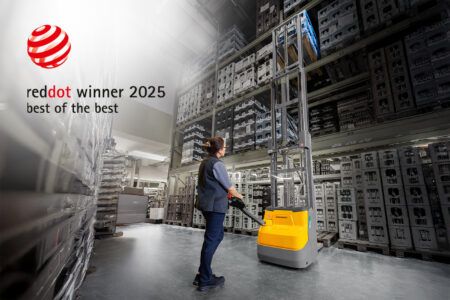Kalmar’s European heavy duty machinery will be powered by Volvo Penta’s new Stage V solution, the company has announced.
The new engine technology was unveiled last week at the ConExpo show in Las Vegas and the technology will be included across all five of Volvo Penta’s engines the D5, D8, D11, D13 and D16.
The power range of the engines offering between 105kW and 565kW is the same as the company’s existing units for industrial, off-road applications, but also meet the stricter Stage V emission requirements.
“Stage V is a challenge for manufacturers. With previous emissions levels, Europe and the US have stayed more or less the same, so it’s going to be quite an effort to make the change,” said Drew Heisel, director of global powertrain sourcing at Kalmar. “Transition rules will be very stringent this time and there’s a shorter period of time for engine resourcing, but we’ve worked through the different combinations together with Volvo Penta.”
Stage V regulations are scheduled to take effect in January 2019, in Europe, requiring new emission limits for diesel and spark-ignited engines used in a variety of industrial applications. The scope of the regulations is set to widen, as for the first time, engines below 19 kW and above 560 kW will be included in the legislation. And while current Stage IV regulations limit the overall mass of particle emissions, Stage V will also affect the number of particles emitted.
For Stage V solutions, the new engine is matched with an exhaust aftertreatment system, which includes diesel oxidation catalyst, a diesel particulate filter, diesel exhaust fluid, selective catalytic reduction and ammonia slip catalyst technology.
Johan Carlsson, chief technology officer at Volvo Penta, said, “In leveraging a commonality of engine architecture, with the addition of the new exhaust aftertreatment system for Stage V, we are able to provide consistency of high quality and performance our products.
“Customers can be assured of ease of installation and the same support from us, in any market, throughout the emissions levels.”
“With our Stage V solution, we have continued to cultivate the successful design philosophy used for our current Stage IV/Tier 4 Final range, keeping the highest focus on maximized uptime, minimized fuel consumption and ease of installation, operation and maintenance.”




